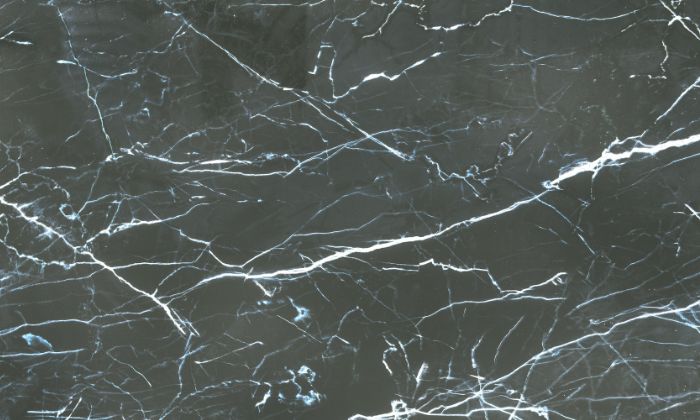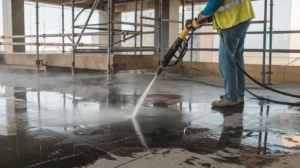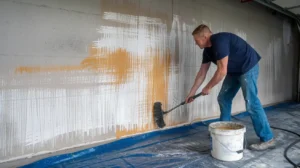Marble is a luxurious and elegant natural stone, often used in countertops, floors, and other surfaces. However, its beauty can be compromised by scratches, which are not uncommon due to the stone’s relatively soft nature.
Understanding how to get scratches out of marble is essential for maintaining its pristine appearance. This guide will walk you through various methods to repair scratched marble, whether it’s a minor surface scratch or a deep gouge, and offer tips on preventing future damage.

Understanding Marble and Its Susceptibility to Scratches
Marble is a metamorphic rock composed primarily of calcite. This natural stone is known for its distinctive veining and smooth surface. Which makes it a popular choice for high-end interior design. However, its composition also makes it susceptible to scratches, especially when exposed to sharp objects or abrasive materials.
The softness of marble varies depending on its type, but it generally ranks around 3-5 on the Mohs scale of hardness. This means that everyday activities can sometimes leave unsightly scratches on marble surfaces. Understanding the nature of marble and its vulnerability is the first step in learning how to get scratches out of marble effectively.
Methods to Remove Scratches From Marble
To remove deep scratches from marble, you will need a professional like Stone Sealer. But, for minor scratches you can remove them by yourself.Just follow our step-by-step guideline.
Mix Warm Water and Mild Dish Soap
To address minor scratches on marble, create a gentle cleaning solution by mixing warm water with a small amount of mild dish soap in a bowl. This mixture is safe for marble and helps clean the surface without causing damage.
The warm water softens any grime, while the soap lifts dirt, making it easier to buff out minor imperfections. Use a soft cloth to apply the solution, gently rubbing the scratched area in a circular motion. This method effectively cleans and prepares the surface for further polishing or repair.
Rub the Area with a Damp Cloth
Dampen a soft cloth in the soapy water and gently rub the scratched area in a circular motion. The circular motion helps to avoid adding more scratches while working the solution into the affected area. This method works well on minor scratches that have not penetrated deep into the marble surface.
Rinse the Surface
After rubbing the area, rinse the surface with clean, warm water to eliminate any soap residue. This step is crucial because any remaining soap can cause streaks or damage to the marble over time. Thoroughly rinsing ensures that the surface is free from any cleaning agents, preserving the marble’s natural shine and preventing potential harm.
Make sure to use only clean water and avoid leaving any moisture on the surface, as marble can be sensitive to prolonged exposure to water. Dry the area immediately after rinsing for the best results.
Buff the Surface
Once the surface is clean and dry, use a dry cloth to buff the area. Buffing helps to restore the marble’s natural shine and can sometimes make minor scratches less visible. Be sure to use a soft cloth to avoid adding more scratches.
Polish the Marble
To polish marble, apply a marble polish to the surface to boost its shine and protect it from scratches. Use a soft cloth to gently rub the polish in circular motions. After applying, buff the area to create a smooth, glossy finish.
This step not only enhances the marble’s natural beauty but also adds a protective layer, helping to maintain its appearance over time. Regular polishing can keep your marble looking pristine and prevent damage from daily use.
How to Get Deep Scratches Out of Marble
Dealing with deep scratches on marble requires a different approach, as these scratches penetrate beyond the surface layer. Here are some methods to tackle deep scratches:
Using Marble Repair Kits
Marble repair kits are specifically designed to address deeper scratches and gouges. These kits usually include a polishing compound, grit sandpaper, and a polishing pad. Start by gently sanding the scratched area with the grit sandpaper provided in the kit. This step will smooth out the scratch and prepare the surface for polishing.
After sanding, apply the polishing compound and use the polishing pad to buff the area until the scratch is no longer visible. Follow the instructions provided with the kit for the best results.
Professional Restoration Service
If scratches on your marble are too deep for DIY repair, it’s wise to hire a professional marble restoration service. These experts use specialized tools and techniques to restore the surface to its original condition, ensuring a flawless finish. Though more expensive, this option is ideal for addressing significant damage, offering long-lasting results that DIY methods can’t match.
Preventing Future Scratches on Marble
Prevention is key to maintaining the beauty of marble surfaces. Here are some tips to help prevent scratches on your marble floors, countertops, and other surfaces:
Proper Maintenance and Care
Regular maintenance is crucial for preventing scratches. Clean marble surfaces frequently with a damp soft cloth and warm water. Avoid using abrasive cleaners or tools that can scratch the surface. Always use a soft cloth or sponge for cleaning, and never use steel wool or hard-bristle brushes.
Periodic Sealing of Marble
Marble is porous, and sealing it periodically can help protect against scratches and stains. A good quality marble sealer creates a protective layer on the surface, making it more resistant to damage. Be sure to follow the manufacturer’s instructions for sealing, and reapply the sealer as recommended.
Frequently Asked Questions
Can Scratches Come Out of Marble?
Yes, scratches can come out of marble, especially if they are minor. Using methods like cleaning with warm water and mild dish soap, followed by polishing, can often remove or diminish the appearance of scratches. For deeper scratches, marble repair kits or professional services may be necessary.
How to Get Marks Out of Marble?
Marks on marble, such as light scratches or scuffs, can often be removed with a damp cloth and a gentle cleaner like warm water and mild dish soap. For more stubborn marks, using a marble polish can help restore the surface to its original condition.
How Do You Repair Damaged Marble?
Repairing damaged marble depends on the severity of the damage. Minor scratches and marks can be addressed with cleaning and polishing. For deep scratches or chips, marble repair kits can be effective. In cases of extensive damage, professional restoration services are recommended.
Does Toothpaste Damage Marble?
Yes, toothpaste can damage marble. Toothpaste often contains abrasive particles that can scratch the surface of marble. If toothpaste comes into contact with marble, it’s important to clean it off immediately using a damp soft cloth and warm water to prevent damage.
Does Lemon Juice Mark Marble?
Yes, lemon juice can mark marble. Marble is sensitive to acidic substances like lemon juice, which can etch the surface and cause dull spots or marks. To avoid this, clean up any spills immediately and avoid using acidic cleaners on marble surfaces.





